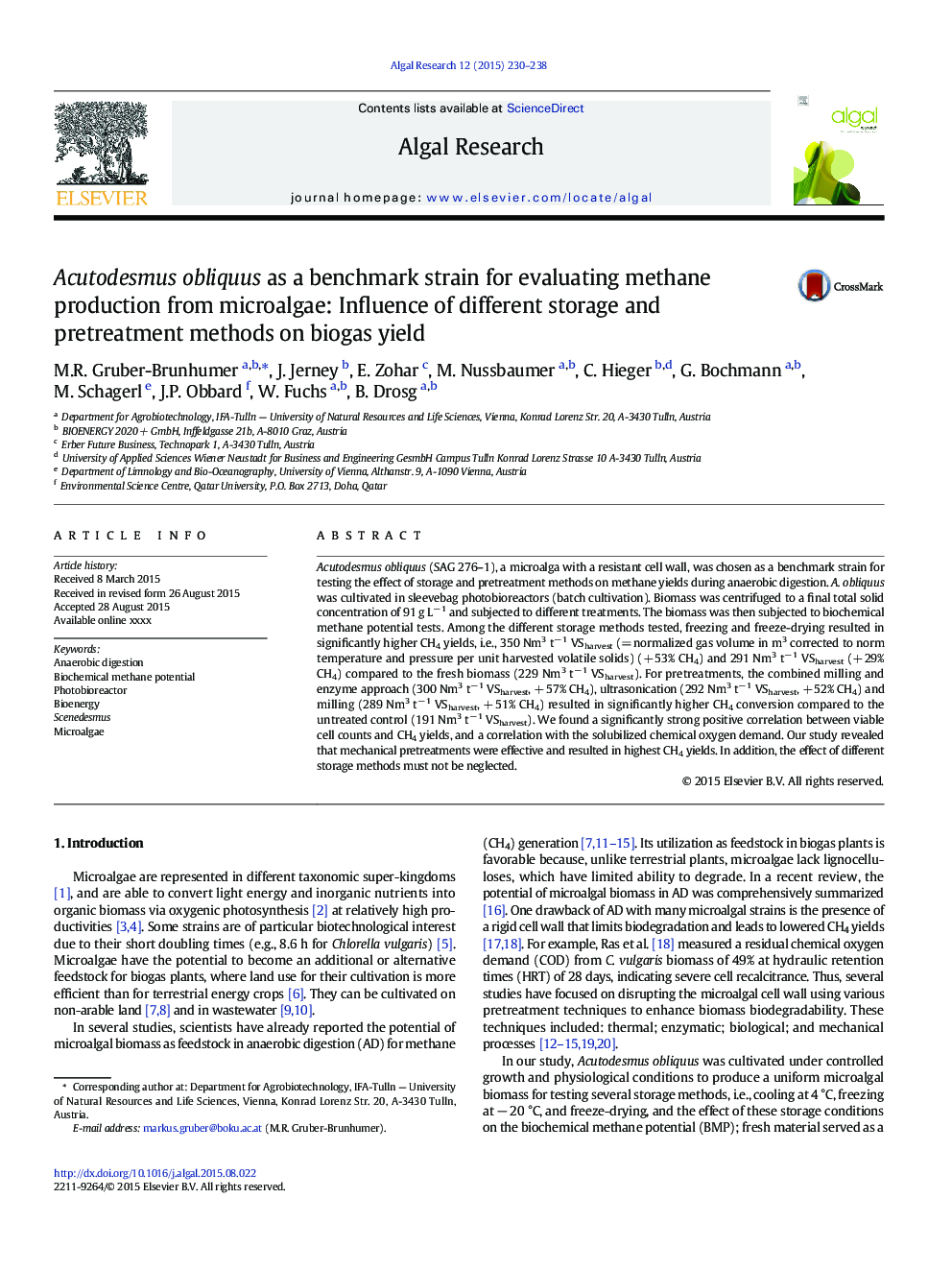| Article ID | Journal | Published Year | Pages | File Type |
|---|---|---|---|---|
| 8087915 | Algal Research | 2015 | 9 Pages |
Abstract
Acutodesmus obliquus (SAG 276-1), a microalga with a resistant cell wall, was chosen as a benchmark strain for testing the effect of storage and pretreatment methods on methane yields during anaerobic digestion. A. obliquus was cultivated in sleevebag photobioreactors (batch cultivation). Biomass was centrifuged to a final total solid concentration of 91 g Lâ 1 and subjected to different treatments. The biomass was then subjected to biochemical methane potential tests. Among the different storage methods tested, freezing and freeze-drying resulted in significantly higher CH4 yields, i.e., 350 Nm3 tâ 1 VSharvest (= normalized gas volume in m3 corrected to norm temperature and pressure per unit harvested volatile solids) (+ 53% CH4) and 291 Nm3 tâ 1 VSharvest (+ 29% CH4) compared to the fresh biomass (229 Nm3 tâ 1 VSharvest). For pretreatments, the combined milling and enzyme approach (300 Nm3 tâ 1 VSharvest, + 57% CH4), ultrasonication (292 Nm3 tâ 1 VSharvest, + 52% CH4) and milling (289 Nm3 tâ 1 VSharvest, + 51% CH4) resulted in significantly higher CH4 conversion compared to the untreated control (191 Nm3 tâ 1 VSharvest). We found a significantly strong positive correlation between viable cell counts and CH4 yields, and a correlation with the solubilized chemical oxygen demand. Our study revealed that mechanical pretreatments were effective and resulted in highest CH4 yields. In addition, the effect of different storage methods must not be neglected.
Keywords
Related Topics
Physical Sciences and Engineering
Energy
Renewable Energy, Sustainability and the Environment
Authors
M.R. Gruber-Brunhumer, J. Jerney, E. Zohar, M. Nussbaumer, C. Hieger, G. Bochmann, M. Schagerl, J.P. Obbard, W. Fuchs, B. Drosg,
